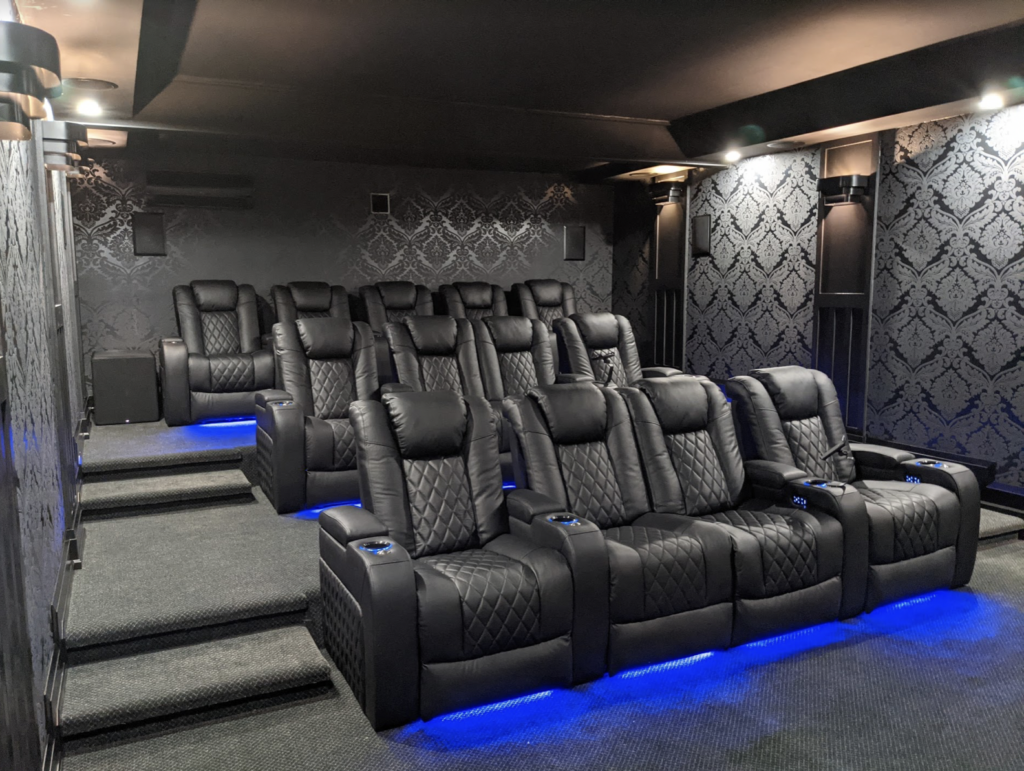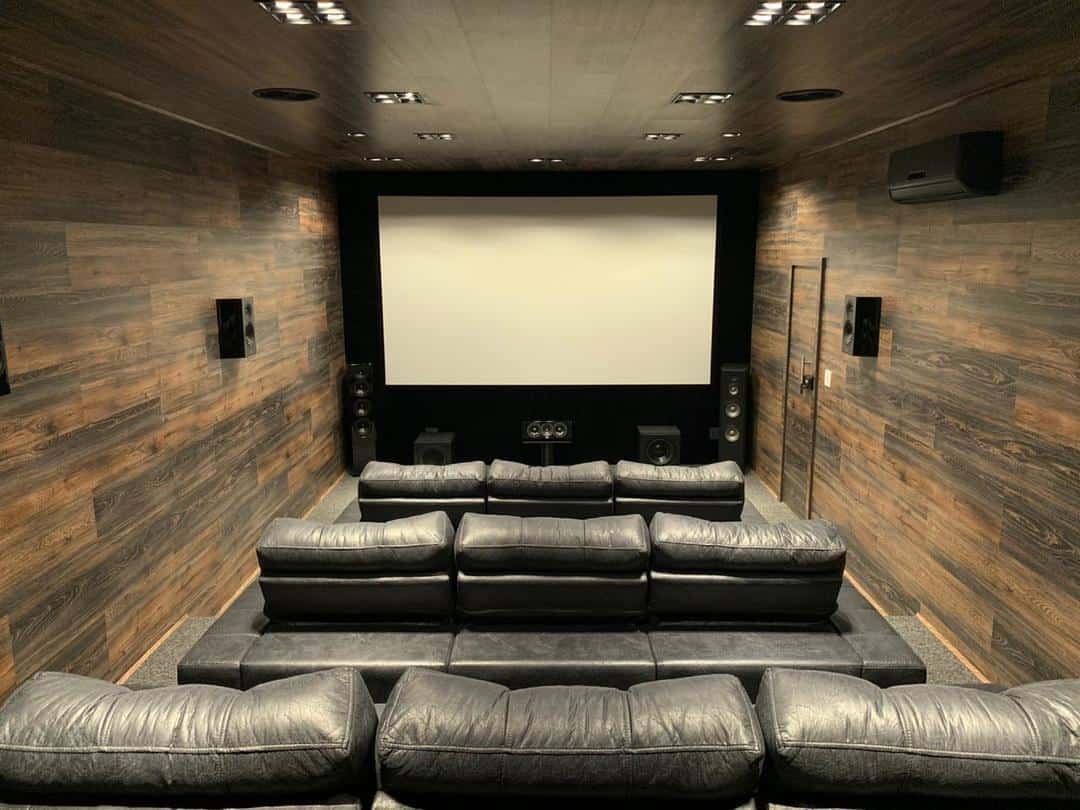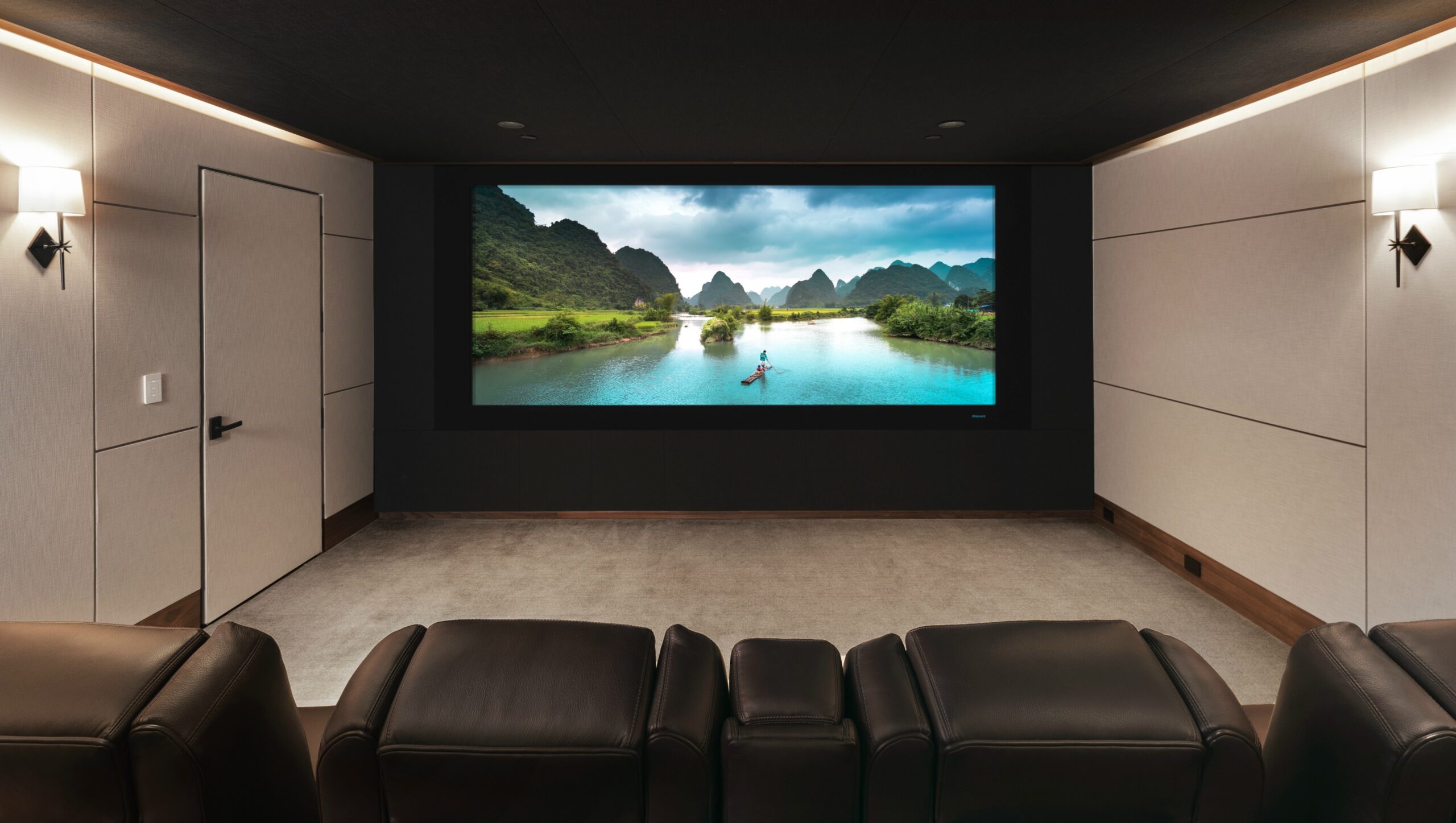Home Theater 101: Whatever You Required to Know for a Cinematic Experience in the house
Creating a home movie theater that measures up to the cinematic experience of an industrial theater involves mindful factor to consider of multiple elements, consisting of display option, stereo, and room design. Each component plays a critical function in attaining the wanted ambiance and functionality. Whether you are considering the ideal screen dimension or the complexities of surround audio, understanding these principles is vital. As we discover these critical components, it ends up being apparent that the options made can substantially affect your total watching experience, leaving one to contemplate how these decisions will shape your individual movie theater.
Picking the Right Screen
When establishing a home theater, picking the best screen can make or damage the checking out experience - home theater tampa. The display works as the centerpiece of your setup, affecting picture quality, watching angles, and general aesthetic. Trick aspects to consider consist of screen kind, size, and resolution
Initially, determine the proper screen dimension based on your area dimensions and seating range. A general standard is to sit about 1.5 to 2.5 times the diagonal display size for ideal watching. Next, pick between numerous screen kinds, such as fixed-frame, motorized, or retracting displays, each offering distinct benefits. Fixed-frame screens generally provide the ideal image high quality, while motorized choices permit for flexibility precede use.
Resolution is one more important element. For a genuinely immersive experience, take into consideration a screen created for 4K or perhaps 8K material, making certain sharpness and clearness. In addition, think about the screen's gain, which influences brightness and comparison; a greater gain can boost brightness in well-lit rooms, while a lower gain may be better for darker environments.
Selecting Audio Equipment
Audio devices is an essential component of any home theater system, considerably improving the total watching experience. The choice of audio equipment can figure out the deepness, clearness, and immersion of noise, important for producing a cinematic environment.
When choosing audio equipment, consider a border audio system, which commonly consists of a receiver, numerous audio speakers, and a speaker. A 5.1 or 7.1 channel system is recommended, where the first number stands for the audio speakers and the 2nd the subwoofer, offering an immersive soundscape. The receiver is the heart of the system, managing sound and video clip signals, and ought to support modern-day layouts like Dolby Atmos for an improved spatial experience.
Quality speakers are important; search for versions that provide a balanced sound account with excellent bass action. Floor-standing speakers can produce richer sound, while shelf options save space. In addition, think about cordless choices for simplicity of installation, although wired systems often supply remarkable performance.

Ideal Seating Arrangements
Creating a perfect home theater experience pivots dramatically on optimum seating plans. The plan of seats plays a vital role in both comfort and watching blog here top quality, directly impacting the overall motion picture experience.
First, think about the screen dimension and seeing range. An usual guideline is to position seats at a range around 1.5 to 2.5 times the diagonal dimension of the screen. This makes certain an immersive experience without straining the eyes.
Following, altitude is essential. If your seating is in a tiered layout, the back rows need to be more than the front to avoid blockages. For level seating, ensure that the front row is not also near to the display, and that every person has a clear line of sight.
Furthermore, take into consideration the arrangement in regards to social dynamics. Team seating can improve the communal experience, while specific seats may be favored for personal watching.

Lastly, prioritize convenience with ergonomic seating that supports extensive viewing periods. Including recliners or cushioned seats can dramatically improve the experience, making the home cinema a preferred destination for both amusement and relaxation.
Lighting and Atmosphere
Reliable lighting and ambiance are necessary elements of a properly designed home theater, as they considerably influence the checking out experience. The right lighting can improve the motion picture feeling, while inadequate choices can detract from it. For ideal outcomes, take into consideration a split lighting method that includes ambient, task, and accent lights.
Ambient lights offers general lighting, guaranteeing that the area is not entirely dark, which can stress the eyes. Dimmer switches are extremely advised, permitting adjustments based upon the material being viewed. Job lighting, such as wall surface sconces or floor lights, provides useful illumination for tasks like analysis or browsing the area without interrupting the general ambience.
Accent lights can be made use of to highlight building features or create centerpieces, including depth and interest to the area. LED strip lights behind screens or along shelves can give a refined glow that enhances the aesthetic experience without overwhelming the viewer.

Wiring and Installation Tips
A tactical circuitry configuration is important for attaining ideal performance in your house movie theater system. Appropriate wiring not just makes certain high-grade sound and video signals but additionally boosts the overall aesthetic of your room. Begin by mapping out your layout, recognizing where each element will be positioned, including your screen, speakers, and receiver.
When picking cable televisions, prioritize high-grade, properly evaluated circuitry to minimize signal loss. HDMI cables need to be utilized for video clip connections, while audio speaker cable should match the specs of your speakers browse around these guys and amplifier. Choose in-wall rated cords to abide by safety criteria and preserve a tidy look.

Conclusion
In recap, creating an extraordinary home theater experience needs mindful consideration of numerous elements, including display selection, audio devices, seating setups, lighting, and electrical wiring. Each component plays an important duty in achieving optimum efficiency and ambiance, eventually boosting the enjoyment of home enjoyment. By focusing on these variables, a cinematic environment can be efficiently replicated, enabling immersive checking out experiences that rival standard cinema setups. Attention to information in each location is crucial for overall fulfillment.
Producing a home movie theater that equals the motion picture experience of a business theater entails mindful consideration of multiple elements, including display choice, sound systems, and area design.When setting up a home movie theater, picking the right screen can make or damage the watching experience. Next, select between numerous display types, such as fixed-frame, motorized, or retractable displays, each offering unique advantages. For a genuinely immersive experience, think about a screen developed for 4K or even 8K content, ensuring intensity and clearness.In summary, developing a remarkable home theater experience calls for cautious consideration of numerous elements, consisting of screen selection, audio devices, seating arrangements, lights, and electrical wiring.